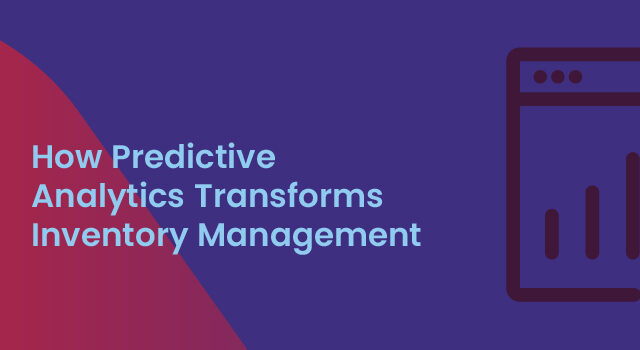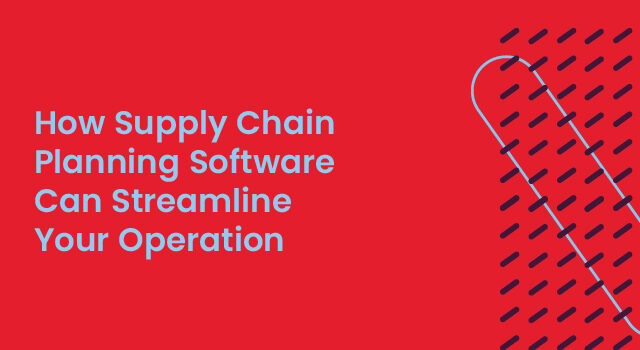Building an efficient supply chain is essential yet challenging, especially in today’s competitive global landscape. It requires stakeholder buy-in and a commitment to performance excellence. Investing in demand and supply planning software with Supplier Performance Management (SPM) functionality is crucial for establishing a robust supply chain foundation.
Supplier Performance Management (SPM) is a systematic process of evaluating and monitoring suppliers to ensure they meet performance expectations, allowing you to keep your delivery promises to customers. It helps establish strategic supplier partnerships focused on efficiency, quality, and innovation. Businesses that invest in supplier partnership programs unlock substantial benefits for both parties.
Benefits of effective supplier performance management and analysis
1. Enhanced supply chain visibility
A visible supply chain is transparent. It’s one where all players know where the product is from the start of the supply chain to the final customer. Real-time data collection and analysis ensures information availability along the way. Movements are recorded from the stores, through production, into the warehouses, and through dispatch processes.
Proactive measures
This clarity of movement lets stakeholders address problems as they arise, reducing the risk of late deliveries and improving lead times. Communication and transparency also build trust with the supplier.
Improved forecasting
Forecasting software accesses real-time supplier performance data. Use the forecasts to assess inventory requirements, delivery lead time, and supply chain bottlenecks.
Real-time data allows you to respond quickly and take advantage of demand changes. Early identification of supplier problems and bottlenecks enables contingency plans to reduce the impact.
Key supplier performance metrics
- On-time delivery %: Percentage of orders arriving within the agreed timeframe
- Quality delivery: Defect rates or conformance to standards
- Lead time: Average time from order placement to delivery
2. Improved supplier relationships
Healthy supplier relationships are essential for an efficient supply chain. A transparent and effective supply chain depends on supplier collaboration and trust. Building such a relationship goes beyond monitoring supplier performance. SPM forms a solid foundation on which to build such a relationship. Here’s how:
- Establishing clear expectations: Mutually agreed goals and objectives clarify expectations.
- Collaboration: Work together to identify issues and solve them. Open communications enable proactive solutions before problems disrupt operations.
- Best practice sharing: Stakeholders share knowledge to improve all supply chain aspects.
To build a strong relationship, both sides must understand their roles and responsibilities. To avoid misunderstandings, inform suppliers of your preferred communication channels and how frequently to communicate. Clear supply agreements ensure that everyone knows what to expect and what’s expected.
Build strategic partnerships with your suppliers for the following benefits:
- Improved reliability: Reliable suppliers deliver expected quality on time.
- Cost savings: Improved processes deliver cost savings for both parties.
- Reduced risk: Collaborative problem-solving enables early problem-solving. Early intervention can prevent disruptions.
- Innovation: Collaboration can lead to joint product development.
Relationship strengthening techniques
Consider these steps:
- Regular performance reviews: Schedule meetings to review past performance. Use the meetings to address issues, and celebrate successes
- Feedback: Offer suppliers constructive feedback to encourage ongoing improvements
- Joint training and development: Upskill employees from both organizations. Encourage information sharing and build a sense of teamwork
- Social events: Informal social events help to build relationships and trust.
3. Risk mitigation
The sooner you identify supply chain risks, the easier it is to reduce the impact. There are several techniques you can use to identify risks. They include:
- Supply chain mapping: Identify all supply chain participants, locations, and possible weak spots
- Scenario planning: Simulate disruptions to identify vulnerabilities and develop recovery plans
- Regular risk assessments: Identify supplier risks from compliance to financial health. Reconsider single sources of supply.
Supplier Performance Management (SPM) helps reduce risk by regularly assessing supplier performance. SPM can identify issues like delivery delays and quality problems. This encourages open communication, where the supplier can talk to you about the risks in their business. By identifying risks, you can develop plans to overcome them.
SPM also helps with regulation compliance. Define compliance requirements in your supply contracts and track regulation compliance through regular audits.
Risk factors may include geopolitical risks, regulatory compliance, cybersecurity risks and fin, and financial stability. It is possible to identify and manage all of these risk areas through SPM monitoring.
4. Cost savings and efficiency
Tracking suppliers’ KPIs will give you valuable insights and offer ideas for cost savings. The performance data will reveal inefficiencies and unnecessary costs.
Compare suppliers’ metrics with the industry average and other potential suppliers. The aim is to understand how well your current supplier perform. Performing product quality can help to address quality problems early and reduce the cost of rework and scrap. Lead time monitoring and improved delivery reliability support inventory optimization efforts.
Case study summaries: supply chain cost reduction
- Intel: Slashed supply chain costs for the Atom chip by over $4 per unit by reducing order cycle time from 9 weeks to 2 weeks. This was the result of process improvements and a change to make-to make-to-order
- Starbucks: Saved over $500 million by reorganizing the supply chain. To do this, they consolidated their 3PL providers and started a scorecard system.
- Terex: Saved 70 weeks per year in labor costs by replacing a manual yard management system with RFID tracking.
Netstock has provided us with increased visibility and flexibility in decision-making. Our relationships with suppliers have significantly improved with clearer anticipated orders. They appreciate the transparency and reliability in our projections, allowing them to plan their production more efficiently. – Eastern Warehouse Distributors
5. Enhanced quality control
Product quality control is a prerequisite for a successful supply chain. Here’s how to achieve the required quality:
- Supplier qualification: Supplier audits should precede supplier onboarding. The aim is to identify concerns about the supplier’s ability to provide quality products.
- Clearly define the quality requirements: Ensure clearly defined product specifications for all externally sourced materials, components, and finished products. Specifications should include material composition, dimensional tolerances, performance criteria, and safety regulations.
- Regular monitoring: Monitor defect rates and product conformity through sampling and inspection. Corrective actions should follow quality deviations.
Robust quality systems will help to reduce the defects and rework rates, improving product consistency. Your warranty claims should come down, enhancing your brand reputation.
6. Innovation and continuous improvement
Looking to the future is important in any long-term relationship, and the supplier partnership is no different. This is why you should encourage a culture of innovation and continuous improvement.
Work together on product development and process improvements. Shared knowledge can have mutually beneficial outcomes. Encourage suppliers to invest in research and development by recognizing inventive problem problem-solving. Innovation and continuous improvement may not be as easy to measure as quality or on-time delivery. Here are some ideas:
- Number of new product ideas
- Adoption of new technologies
- Implemented new process ideas
A culture of continuous improvement is well worth pursuing for the following benefits:
- Better products: Collaboration encourages innovation. The result is better products to meet changing customer needs.
- Improved efficiency: Continuous improvement identifies and cuts waste. The result is faster delivery and cost savings for all.
- Reduced risks: Role players identify and eliminate problems, reducing risk.
- Increased agility: The supply chain can adapt quickly to changing market demands.
7. Accountability and performance monitoring
For a supply chain that delivers, you must establish clear performance metrics. Then, you must hold suppliers accountable for achieving the metrics. Robust performance tracking and reporting will deliver the following benefits.
- Better insights into supplier performance: When you regularly track supplier performance, you’ll understand your suppliers’ strengths and weaknesses.
- Early problem identification: Take corrective action before problems cause disruptions.
- Continuous improvement: Use your performance metrics to identify trends and measure improvements.
Performance metrics could include:
- Performance scorecards: Include various metrics on a supplier scorecard. See supplier performance at a glance.
- Service Level Agreements (SLAs): Formal agreements explain performance expectations.
Setting performance agreements and metrics is just a part of managing performance. You must also hold suppliers accountable. Regular performance reviews and corrective action plans can keep suppliers in line with your requirements.
When performance falls short, ask the supplier for a corrective action report. Action plans must include improvement steps with implementation dates.
We use the supplier performance functionality to track our poor-performing suppliers so we can review and eliminate any extended lead times to avoid a build-up of backorders. We are also able to develop our supplier relationships and understand their frustrations so we can make necessary adjustments to our ordering frequency without presenting a risk to the business – Stonegate Tooling
Building an efficient supply chain
A well-managed efficient supply chain is a strategic asset that can deliver better customer service at lower cost for all stakeholders. Mutually agreed and monitored performance metrics can build supplier partnerships that support streamlined supply chains.




